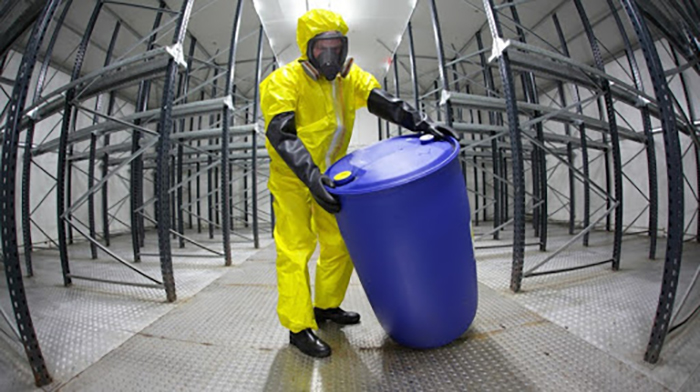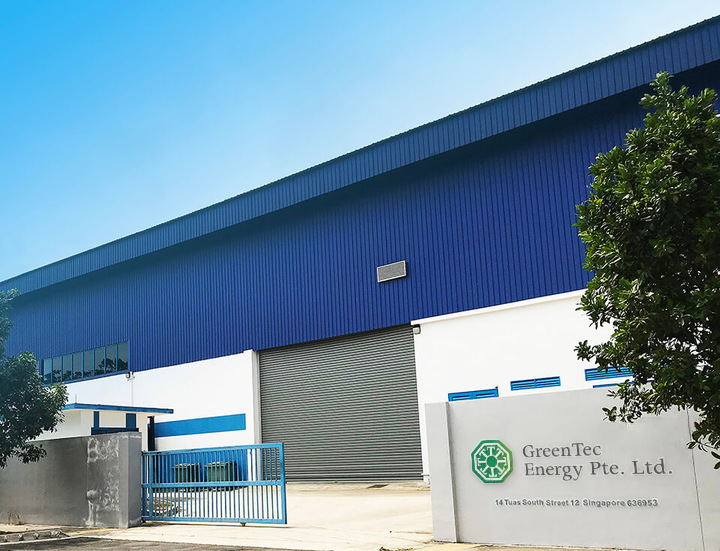Toxic Waste Management - An Overview
June 19, 2024

Singapore, an island city-state with a highly urbanised environment, faces unique challenges in managing toxic waste. Despite its limited land area and high population density, Singapore has developed robust systems to handle toxic waste effectively. This article provides an overview of the types of toxic waste in Singapore, management strategies, regulatory frameworks, and future directions in this critical area.
Types of Toxic Wastes in Singapore
In Singapore, toxic wastes are stringently managed to ensure environmental safety and public health. These wastes are categorised based on their sources, with each category requiring specialised handling and disposal procedures. Here’s a detailed exploration of the primary types of toxic wastes found in Singapore:
1. Industrial Wastes
Industrial wastes are produced by manufacturing sectors, such as electronics, chemicals, and metal processing industries. Which generates the type of waste as shown below:
Heavy Metals
Industries like metal plating, battery manufacturing, and electronics production generate wastes containing heavy metals such as lead, mercury, cadmium, and chromium. These metals are highly toxic, potentially causing severe soil and water contamination, bioaccumulation in the food chain, and adverse health effects, including neurological damage and kidney failure.
Solvents
Industrial processes use solvents like toluene, xylene, and acetone for cleaning and degreasing. These volatile organic compounds (VOCs) can cause air pollution, contribute to the formation of ground-level ozone, and pose health risks such as respiratory problems and skin irritation.
Chemical By-products
Various chemical reactions in industrial processes produce hazardous by-products, including cyanides and sulphides. These substances are toxic and can cause environmental harm, including aquatic toxicity and air pollution if not properly managed.
2. Healthcare Wastes
Healthcare facilities, including hospitals, clinics, dental offices, medical laboratories, and veterinary clinics, generate healthcare waste. The waste they are:
Infectious Materials
Items like used bandages, surgical gloves, and other materials contaminated with blood or bodily fluids fall under infectious waste. These materials pose a high risk of spreading infections and diseases, including HIV, hepatitis, and other pathogens, necessitating proper sterilisation and disposal methods such as autoclaving or incineration.
Pharmaceuticals
Expired or unused medications, including antibiotics, hormones, and narcotics, require careful disposal to prevent environmental contamination, drug abuse, and antimicrobial resistance. Proper pharmaceutical waste disposal involves incineration or other methods that ensure the destruction of ingredients.
Medical Devices
Sharps like needles, syringes, and scalpels pose a high risk of injury and infection. These items must be placed in puncture-proof containers and disposed of through incineration or other safe disposal methods to prevent accidental needlestick injuries and the transmission of bloodborne diseases.
3. Electronic Wastes (E-waste)
E-waste consists of discarded electronic devices from households and businesses, including computers, smartphones, and household appliances. For example:
Hazardous Materials
Electronic devices contain hazardous substances such as lead in cathode ray tubes (CRTs), mercury in switches and relays, cadmium in batteries, and flame retardants in plastics. Improper disposal can lead to these toxic materials leaching into soil and water, causing long-term environmental damage and health issues like cognitive impairment and kidney damage.
Recyclable Components
Many components of electronic devices, including metals like gold, silver, copper, and rare earth elements, can be recycled. Proper e-waste recycling involves dismantling devices, safely extracting hazardous materials, and recovering valuable components, reducing the need for virgin raw materials and minimising environmental impact.
4. Household Hazardous Wastes
Households generate hazardous wastes through everyday items and products which might surprise you. For example:
Batteries
Household batteries, including alkaline, lithium, and rechargeable types, contain metals such as mercury, lead, and cadmium. Improper disposal can result in these toxic substances contaminating soil and groundwater. Battery recycling programs aim to safely recover and recycle these metals, preventing environmental harm.
Paints
Paints and related products often contain volatile organic compounds (VOCs) and heavy metals like lead and mercury. Disposal of leftover paint should be conducted through designated collection points or hazardous waste facilities to ensure safe handling and prevent air and water pollution.
Cleaning Agents
Many household cleaning products contain toxic substances like ammonia, bleach, and phosphates. Improper disposal can lead to water contamination and adverse health effects. Safe disposal methods include using up the product according to instructions or disposing of it through community hazardous waste collection programs.
Management Strategies of Toxic Waste in Singapore
Singapore, a small yet highly industrialised nation, faces unique challenges in managing toxic waste due to its limited land area and dense population. Some of the strategies they use are:
Public-Private Partnerships
Singapore also recognises the importance of collaboration between the public and private sectors in managing toxic waste. The government partners with private companies to develop and operate waste management facilities, ensuring that expertise and resources are effectively utilised.
Education and Public Awareness
In addition, Educating the public and industry stakeholders about the importance of proper toxic waste management is also a key component of Singapore’s strategy. The NEA conducts regular outreach programs, workshops, and campaigns to raise awareness about the dangers of toxic waste and the best practices for managing it.
Treatment and Disposal Methods
For toxic waste that cannot be recycled or recovered, Singapore employs rigorous treatment and disposal methods to ensure environmental protection and public safety. The common methods include:
1. Chemical Treatment Facilities
Singapore operates advanced chemical treatment facilities equipped to neutralise and detoxify hazardous substances. These facilities employ cutting-edge technologies to treat a wide range of toxic waste streams effectively.
2. Secure Landfills
Singapore maintains secure landfills engineered to prevent groundwater contamination and environmental pollution. These landfills feature multiple layers of impermeable liners and leachate collection systems to safeguard against hazardous waste leakage.
3. Incineration with Energy Recovery
Incineration remains a crucial component of Singapore's waste management strategy. By burning toxic waste at high temperatures, Singapore reduces waste volume while recovering energy for electricity generation. Stringent emission control measures ensure that incineration does not compromise air quality.
Regulatory Framework
The cornerstone of Singapore’s toxic waste management strategy is its robust regulatory framework. The Environmental Protection and Management Act (EPMA) and the Environmental Public Health Act (EPHA) are the primary legislative instruments governing the management of hazardous substances and toxic waste.
Under these laws, the National Environment Agency (NEA) is empowered to enforce strict regulations on the generation, storage, transportation, and disposal of toxic waste. The main ones are shown below.
- Hazardous Waste (Control of Export, Import, and Transit) Act
This Act controls the transboundary movement of hazardous waste under the Basel Convention, ensuring that toxic waste is managed in an environmentally sound manner. - Environmental Public Health (Toxic Industrial Waste) Regulations
This set of regulations specifies the requirements for the proper storage, collection, transportation, treatment, and disposal of toxic industrial waste.
Conclusion
In conclusion, Singapore effectively manages toxic waste despite its small size and urbanisation. Through strict categorization, partnerships, and advanced methods, it addresses industrial, healthcare, electronic, and household hazardous wastes.
With robust regulatory frameworks and ongoing innovation, Singapore prioritises environmental protection and public health while maintaining its global leadership in waste management.
For comprehensive waste management solutions tailored to your needs, partner with GTE today. Click here to contact us!
 GreenTec Energy Pte Ltd (GTE) is a waste management company located in Tuas, Singapore.
GreenTec Energy Pte Ltd (GTE) is a waste management company located in Tuas, Singapore.
Our service includes Industrial waste, Oily waste, Marine waste.
To provide a hassle free solution to our customer is always the key approach and to ensure a win-win situation towards. As a NEA approved environmental company in Singapore, we take all our services seriously and to ensure maximum safety with compliances applied. Every step of our disposal processes are also designed to meet NEA & SCDF requirements, with latest treatment facilities and laboratories to test and treat all incoming waste before disposal.
GTE operates a total land area of about 100,000sqft at 14 Tuas South Street 12 Singapore 636953. With our comprehensive logistics and transportation fleet, we provide prompt and efficient services in transportation of waste to our premises.
